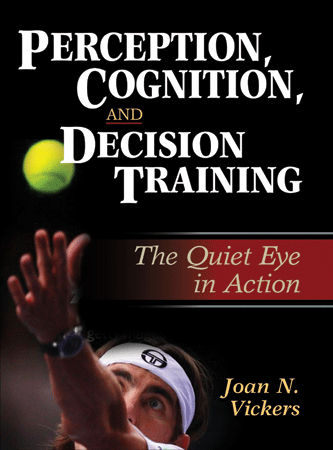|
Read about the research foundations of the quiet eye and quiet eye training.
http://www.humankinetics.com
The Quiet Eye (QE) and Quiet Eye Training (QET) have emerged as major discoveries.
The following provide an overview of research studies completed to data, and measures of the strength of the QE and QET.
Lebeau, J. C., Liu, S., Saenz-Moncaleano, C., Sanduvete-Chaves, S., Chacon-Moscoso, S., Becker, B. J., & Tenenbaum, G. (2016).
Quiet Eye and Performance in Sport: A Meta-Analysis. Journal of Sport and Exercise Psychoogy, 1-61.
Mann, D. T., Williams, A. M., Ward, P., & Janelle, C. M. (2007). Perceptual-cognitive expertise in sport: a meta-analysis.
Journal of Sport & Exercise Psychology, 29(4), 457-478.
Hossner, E. J. (Ed.) (2016). Quiet Eye Research - Joan Vickers On Target (Vol. 2016). Current Issues in Sport Science (CISS).
pp 1-88, Swiss and Austrian Societies of Sport Science.
Rienhoff, R., Tirp, J., Strauss, B., Baker, J., & Schorer, J. (2016). The 'Quiet Eye' and Motor Performance: A Systematic
Review Based on Newell's Constraints-Led Model. Sports Med, 46(4), 589-603. doi:10.1007/s40279-015-0442-4
Quiet Eye Training (QET) has proven to be successful in many sports. For an overview see:
Wilson, M., Causer, J., & Vickers, J. N. (2015). Aiming for excellence: The quiet eye as a characteristic of expertise.
In J. Baker & D. Farrow (Eds.), Routledge Handbook of Expertise (pp. 22-37). New York, NY: Routledge.
|
|

|

